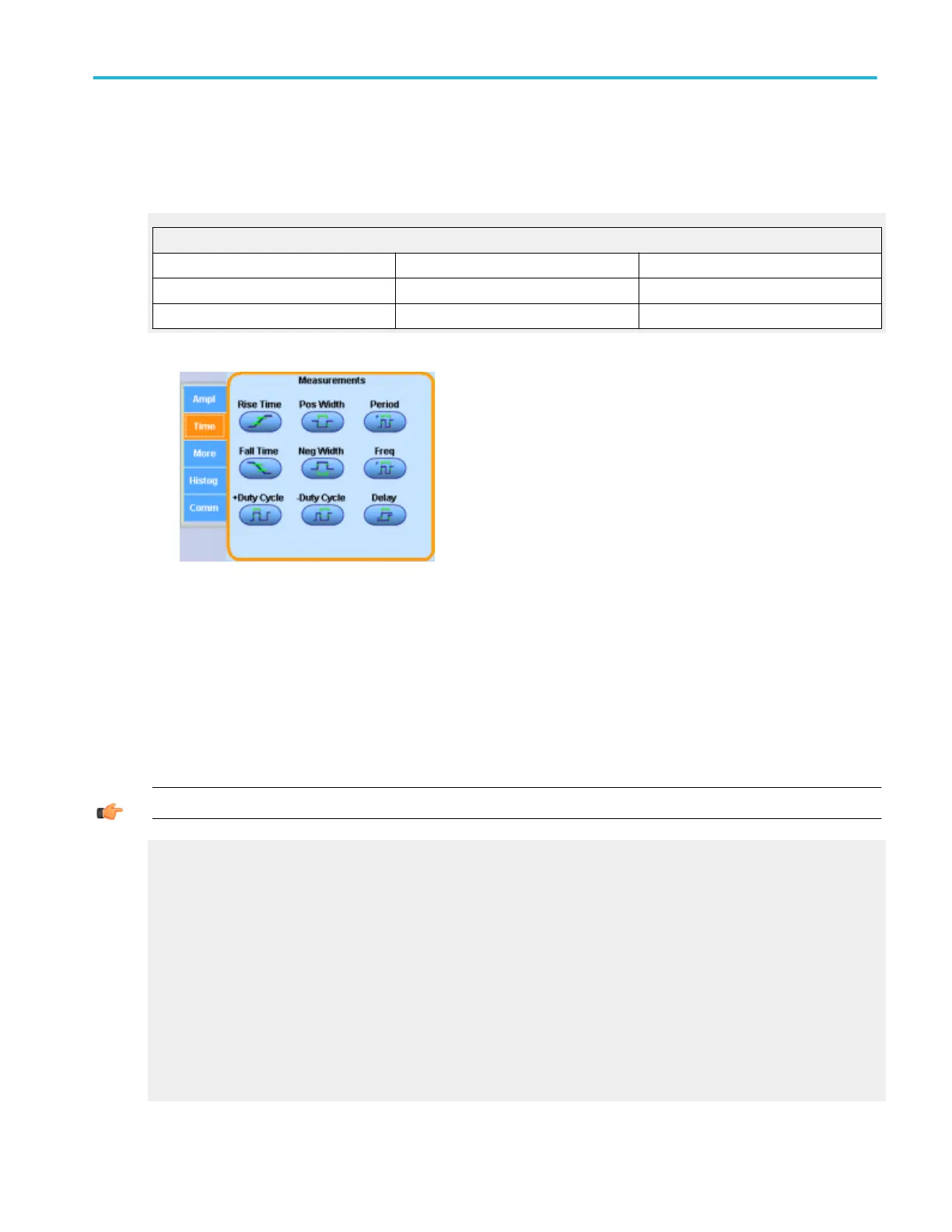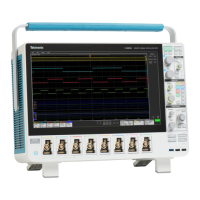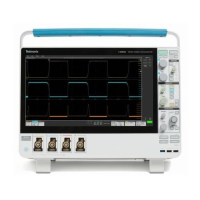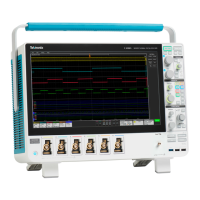To use
Use the Time tab to select automatic time measurements.
1. Select a source with the Channels Selector.
2. Click a Measurements button to add a Time measurement to the Measure list:
Time measurements
Rise Time Pos Width Period
Fall Time Neg Width Freq
+Duty Cycle -Duty Cycle Delay
3. Click Display On in the upper-right corner of the Measurement Setup Control Window to turn the measurement display on
and off.
Behavior
Measurements are updated approximately three times a second, or less for long record lengths. Measurements are calculated
after each acquisition. You can display up to eight automatic measurements.
A new control window opens when you click Delay. Enter the parameters for the delay measurement, and then click Ok to return
to the Measurement Setup control window. The delay measurement is added to the list.
TIP. Select the individual measurements directly from the Measure menu Time submenu.
Rise Time
This timing measurement is the time required for the leading edge of the first pulse in the waveform or gated region to rise from
the low reference value (default = 10%) to the high reference value (default = 90%) of the final value.
Fall Time
This timing measurement is the time required for the falling edge of the first pulse in the waveform or gated region to fall from the
high reference value (default = 90%) to the low reference value (default = 10%) of the final value.
Positive Duty Cycle
This timing measurement is the ratio of the positive pulse width to the signal period expressed as a percentage.
The duty cycle is measured on the first cycle in the waveform or gated region.
Positive Duty Cycle = (Positive Width) × Period × 100%
Measurement setups
DPO70000SX, MSO/DPO70000DX, MSO/DPO70000C, DPO7000C, and MSO/DPO5000B Series 277

